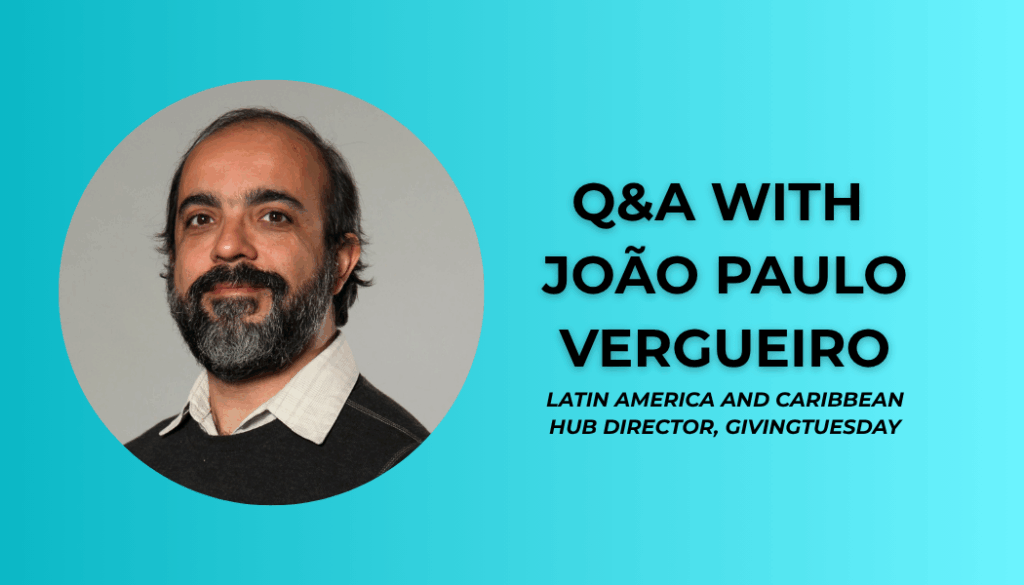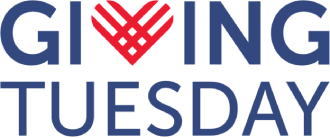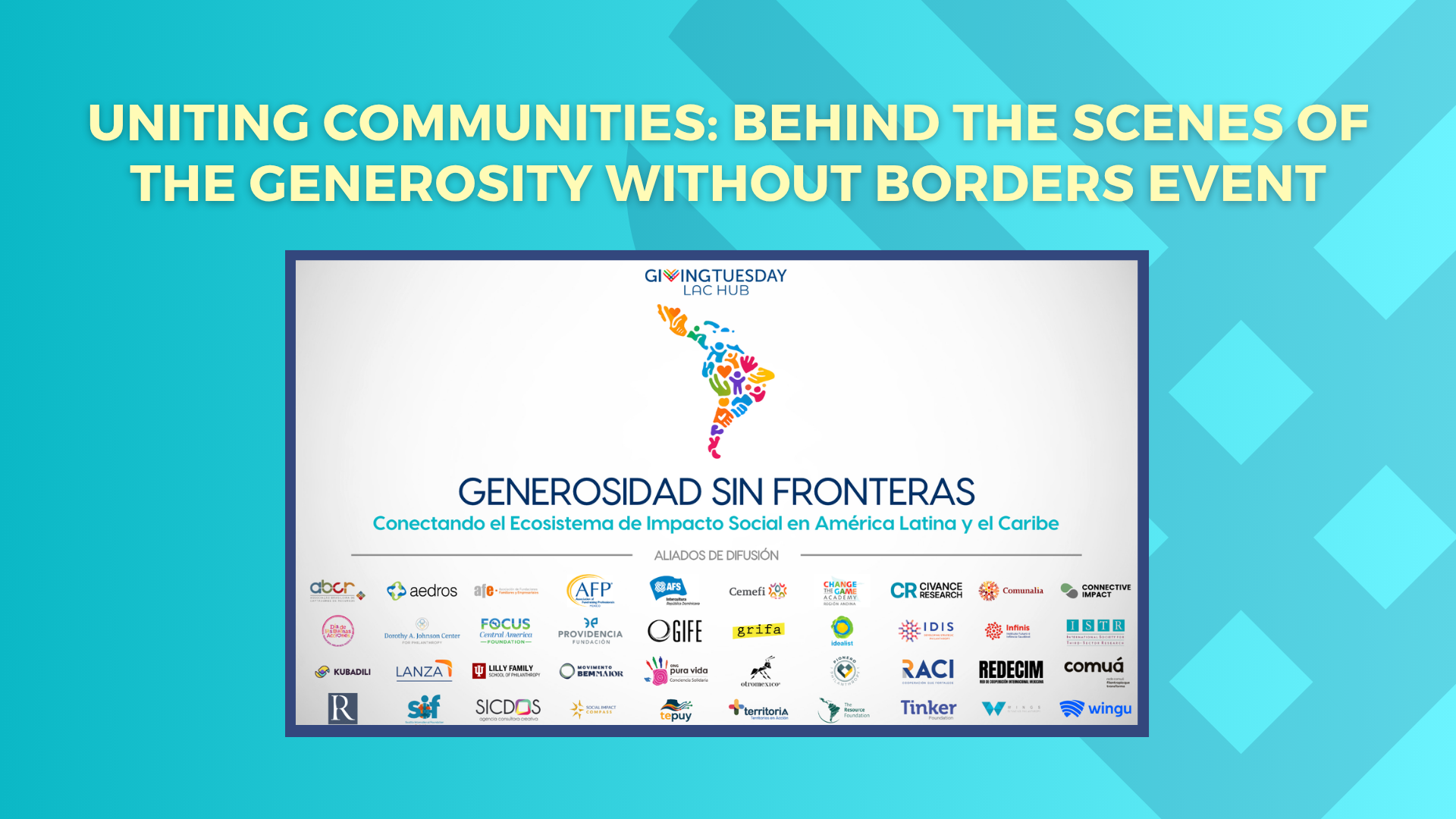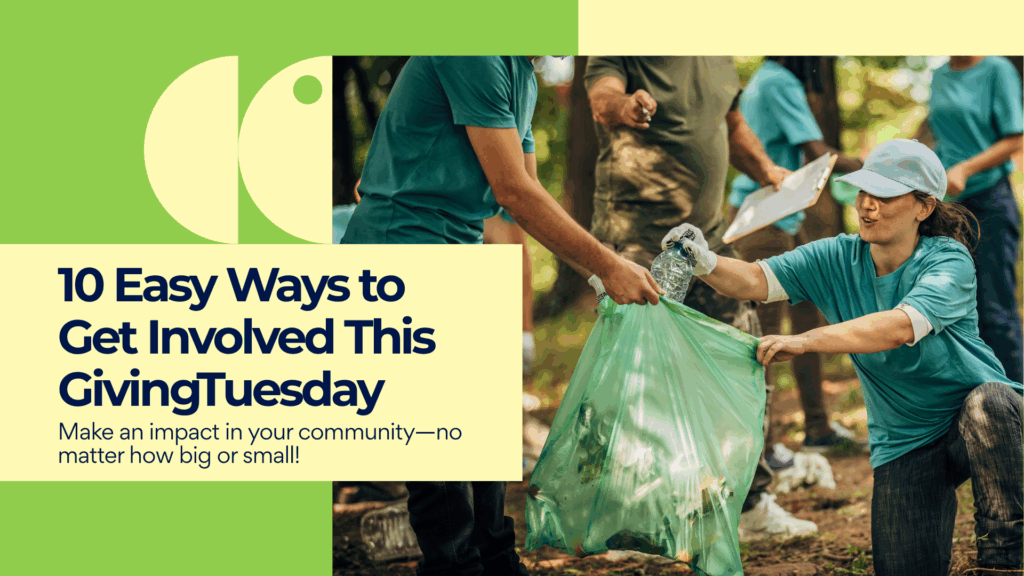Partnerships make big ideas possible, and the first-ever Generosity Without Borders summit from GivingTuesday’s Latin America & Caribbean Hub is proof. Led by JP Vergueiro, the LAC Hub Director, this two-day virtual event brought together nonprofit leaders, funders, GivingTuesday country leaders, and other stakeholders from across the region to explore, celebrate, and amplify generosity.
With 33 countries, 17 territories, and multiple languages to navigate, organizing the summit was no small feat. But through intentional collaboration with over 40 outreach partners, creative session planning, and a thoughtful mix of plenary and breakout sessions, the team exceeded expectations, attracting 1,300 participants — more than double their goal.
For nonprofits and community leaders looking to expand their reach, strengthen collaborations, and run large-scale events, JP’s experience offers valuable lessons in planning, partnership, and execution.

Q: Can you introduce yourself and your role at the GivingTuesday Latin America & Caribbean Hub?
My name is João Paulo Vergueiro, or simply JP, and I am the Latin America and Caribbean Hub Director for GivingTuesday. Before joining the movement in this position, I was the country leader for Brazil, where I helped bring GivingTuesday to the country under its local name, Dia de Doar.
Q: What motivated you to create the Generosity Without Borders (GWB) event, and what were the main goals?
People in Latin America and the Caribbean are naturally generous; we give our time, voice, money, and various resources year-round. However, even in the philanthropic and social impact sectors, we don’t often discuss generosity, we don’t study it, and we don’t truly celebrate it.
The LAC Generosity Summit was created out of this need: to spotlight generosity in the region, unite nonprofit leaders, funders, GivingTuesday leaders, and other stakeholders, and create a space to talk, share experiences, inspire action, and discuss how to mobilize communities to do good.
Q: How did you plan and organize a two-day virtual event across multiple languages (Spanish, English, Portuguese) and countries?
The LAC region is very diverse. There are 33 countries and 17 territories, and we speak many languages, including those inherited from colonizers, native languages, and sign languages.
It will always be a challenge to include everyone with such linguistic diversity. Still, we did our best to make the first edition of the event accessible by offering most of the program in the three most widely spoken languages in the region.
Choosing the right platform was key for that. Zoom has a well-structured built-in feature for working with interpreters and subtitles, making the participants’ experience seamless.
Q: What challenges did you face in coordinating such a large, multi-country event, and how did you overcome them?
The first challenge was identifying the best platform. We picked Zoom not only for its language features, as mentioned before, but also because it has become quite common to everyone since COVID and is very user-friendly.
A second challenge was that an event like Generosity Without Borders (GWB), focused primarily on talking about generosity, had never been organized before anywhere in the world. We weren’t sure what to expect or who would participate.
We had an initial goal of 500 participants and ended up with 1,300 registrations. To achieve that number, we partnered with dozens of organizations in the region, who helped us promote the event and bridge gaps in access to leaders. The Hub itself has only been active for two years, so we are still building and consolidating our presence in the region.
We also managed complexity by keeping the event to two days, five hours per day, with a maximum of five parallel sessions. This structure helped us to coordinate everything without much hassle, despite the complexity of everything. The team was very well synchronized throughout.
Q: How did you decide on the session topics and structure, including plenary and breakout sessions?
We used two strategies to define the agenda. For the plenary sessions, five over the two days, we focused on our main issues and invited speakers from the GivingTuesday team, country leaders, and partners.
For most of the breakout sessions, we invited our partners to submit proposals. About two months before the event, we reached out, explained the concept, and asked them to share ideas on how they could connect generosity with the work they were already doing. They were happy to share and take part in the event!
Q: What strategies did you use to make the sessions practical and immediately useful for participants?
For the plenaries, we invited leaders from different parts of the world, including India, Africa, and other local GivingTuesday leaders and funders, to bring their diverse perspectives, visions, and backgrounds.
The breakout sessions offered a range of approaches, including sessions focused on pitching, fundraising strategies for nonprofits, and interactive workshops with smaller breakout rooms. Speakers were encouraged to be creative and to catch and hold participants’ attention.
Q: How did you attract participants and keep them engaged throughout the two days?
The first day had mainly plenary sessions to capture participants’ attention and encourage reflection on the big-picture issues. The breakout sessions were scheduled for the second day of the event, with more session options for attendees to choose from.
This structure was one of the key strategies used to keep participants engaged over both days. In addition, the session topics were vibrant and distinct from one another, bringing a whole mix of approaches to exploring generosity.
Q: What feedback did you receive from attendees, and what impact did the event have on their work or communities?
The feedback we received was very positive, both during the event and afterward! Almost all sessions received high praise, with attendees expressing awe and delight at the opportunity to participate in Generosity Without Borders.
Many participants shared that they had never considered the possibility of a regional convening and were impressed by our efforts to maintain the three languages throughout the event.
After the event, we invited the participants to join a community campaign course offered in four sessions. With over 300 registrations, this was a strong indicator of how inspired attendees were and how motivated they were after the event.
Q: Can you share how strategic partnerships helped make this event possible and amplify its impact?
We had 40 formal outreach partners for Generosity Without Borders. They were showcased on the event’s webpage and were mentioned throughout the two days. These partners played an important role in promoting the event, creating the agenda, and bringing in additional speakers and participants.
What was especially exciting is that over 90% of the institutions we approached to partner with happily accepted our invitation. And they had no idea how the event would unfold!
Their support helped us extend our reach to people and local leaders we wouldn’t have been able to access through just our mailing list.
Q: Were there any standout collaborations or contributions from partners that particularly enhanced the event?
There’s an initiative called Latin America Funders Collective (LAFC), founded by the Tinker Foundation, Focus Central America, and Tawing Fund. LACF proposed a plenary session reflecting on the relationship between donors and grantees in the region, and also shared practical tools for participants. It was one of the event’s highlights!
Q: What were the key lessons learned in running this first Generosity Without Borders event?
The first and most important lesson is that there is a strong desire in LAC to learn and reflect on the role of generosity in our lives and in the development of our communities.
While we are all accustomed to discussing traditional philanthropic topics, such as institutional giving and impact investing, this event provided hundreds of participants the opportunity to reflect on alternative ways of promoting good, with generosity at its center.
Generosity Without Borders taught us that people want to be together with others who are working fiercely toward the same goal: building a better world for everybody!
Q: What are your plans for next year’s event, and how will you build on the momentum from 2025?
In 2025, we experimented, tried new things, and learned a lot. For 2026, we plan to consolidate these lessons and deliver an event that will be bigger, better, and even more impactful.
We will have more time to plan, promote, and bring additional partners on board. It is particularly important to us that the event becomes a regular fixture on people’s calendars throughout Latin America and the Caribbean. To achieve this, we want to engage more partners in shaping the event, rather than having just the LAC Hub deliver it alone to LAC communities.
Key Takeaways for Nonprofits: Collaboration & Partnership Strategies
- Start Early with Partners: Reach out months in advance to discuss ideas, roles, and logistics. Early collaboration allows partners to provide meaningful input and helps ensure a smooth execution.
- Leverage Diverse Expertise: Involve partners in both plenary and breakout sessions. Their unique perspectives and experiences improve the agenda and create more relevant, practical sessions for participants.
- Use Partnerships to Extend Reach: Collaborating with local organizations, funders, and networks can help attract participants beyond your immediate mailing list or community.
- Design for Accessibility: Consider linguistic, cultural, and regional diversity. Choosing the right platform and offering translations or subtitles can make large, multi-country events inclusive.
- Keep Structure Manageable: Balance ambition with practicality. Limiting the number of parallel sessions and keeping the event schedule clear helps teams coordinate and participants stay engaged.




